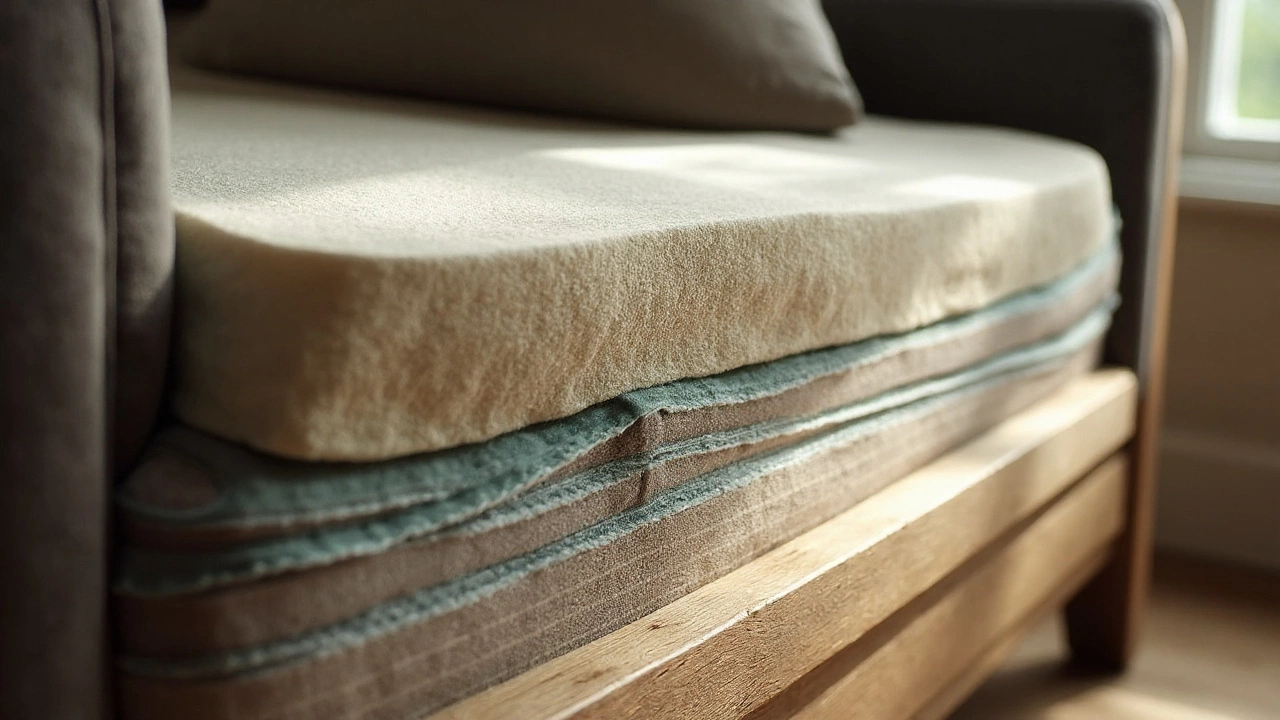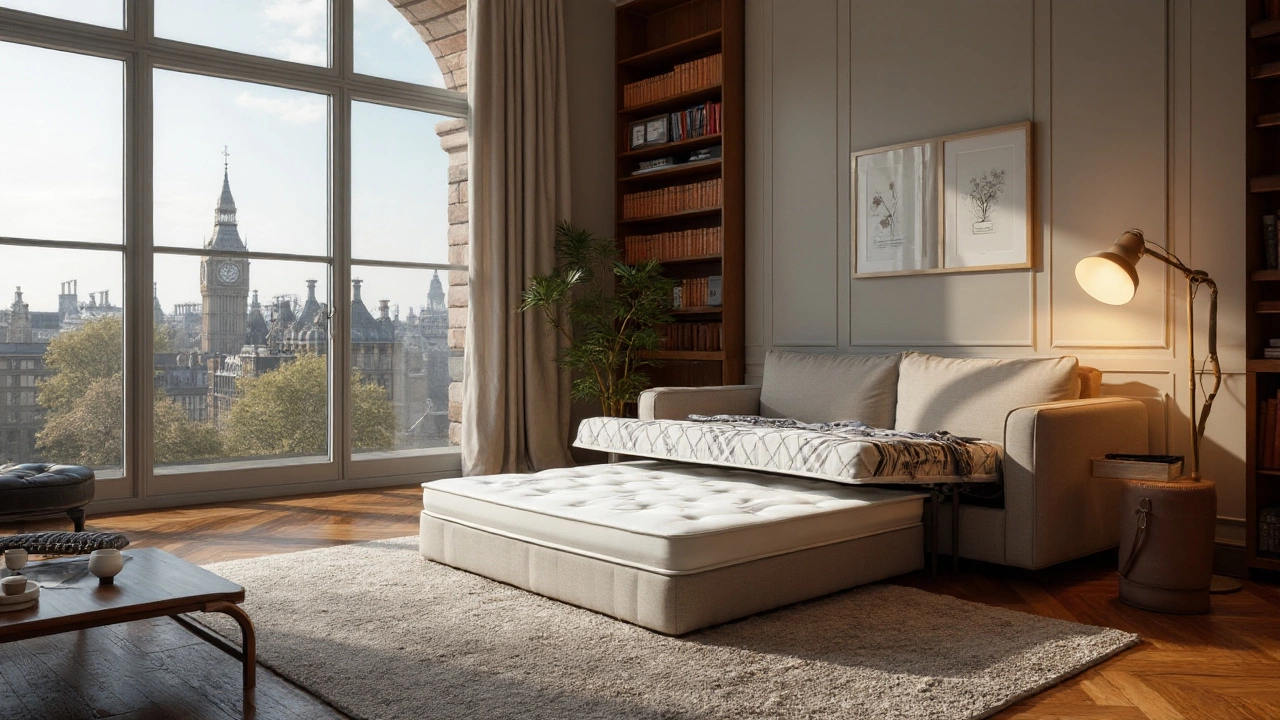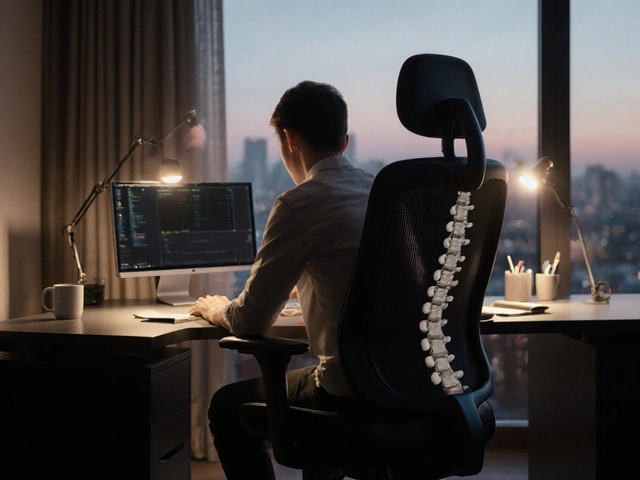Sofa Bed Mattress Needs Checker
Answer the questions below to determine if you need a separate mattress for your sofa bed.
Sofa Bed is a convertible piece of furniture that folds out into a sleeping surface, combining seating and a bed in one footprint. When you first see a showroom model, the question that pops up is simple: does it need a separate sofa bed mattress or does it come with a built‑in sleeping layer? This article unpacks the answer, walks through the different mattress systems, and gives you a clear roadmap to pick the right setup for your home.
Quick Takeaways
- Most modern sofa beds include a built‑in mattress or foam insert; a separate mattress is rarely needed.
- When you do add a mattress, choose a thin, high‑density foam or a custom‑fit spring core to avoid sagging.
- Comfort hinges on three factors: support system, mattress thickness, and upholstery tolerance.
- Regular rotation and a protective cover extend the life of any sleeping surface.
- Space‑saving furniture like futons and daybeds follows similar rules but may have different mechanisms.
How a Sofa Bed Is Built: Core Components
Understanding the anatomy of a sofa bed helps you decide whether an extra mattress is worthwhile. The main pieces are:
- Sleeper Mechanism the hinge, pull‑out rails, or folding frame that transforms the seating layout into a flat surface. Common types include pull‑out drawers, fold‑out armrests, and click‑clack mechanisms.
- Frame the wooden or metal skeleton that supports both the seated and sleeping positions. A sturdy frame prevents wobble and distributes weight evenly.
- Upholstery fabric or leather covering the cushions and frame, influencing breathability and durability. Heavy upholstery can hide minor sagging; lightweight fabrics reveal it.
- Sleeping Surface the layer you lie on, which may be a built‑in foam insert, a spring core, or a removable mattress.
Built‑In Mattress vs. Separate Mattress: Pros and Cons
Manufacturers typically ship sofa beds with one of three built‑in sleeping solutions. Adding a separate mattress is an option, but it comes with trade‑offs.
| Aspect | Built‑In Mattress | Separate Mattress |
|---|---|---|
| Fit | Custom‑shaped to frame, no gaps | May need trimming or a mattress topper |
| Thickness | Typically 2-4inches, slim for easy folding | Often 4-6inches, which can strain the mechanism |
| Comfort | Depends on core material (foam, spring, latex) | Higher comfort if you choose premium material |
| Maintenance | Integrated cover, easier to clean | Requires separate bedding, adds laundry |
| Longevity | Designed for repeated folding, if quality is good lasts 5‑7years | Potential for sagging faster if too thick |
Types of Mattress Cores Used in Sofa Beds
When you compare what lives inside a sofa bed, three core materials dominate the market.
| Core Type | Support Rating (1‑10) | Typical Thickness | Best For |
|---|---|---|---|
| High‑Density Foam Polyurethane foam with a density of 2.5+lb/ft³ | 7 | 2-3in | Lightweight homes, easy folding, budget‑friendly |
| Spring Core Pocketed coils or continuous springs that provide bounce and airflow | 8 | 3-4in | Guests who prefer a traditional mattress feel |
| Latex Natural or synthetic latex layers offering resilience and hypoallergenic properties | 9 | 3-4in | Eco‑conscious buyers, those needing extra elasticity |
High‑density foam wins on weight and ease of folding, making it the go‑to for most urban apartments. Spring cores give a more “bed‑like” bounce but add heft; they’re best for sofa beds that stay in the open position for several nights. Latex offers the highest support rating, but it’s pricier and can be heavier than foam.

When Adding a Separate Mattress Makes Sense
There are three main scenarios where you might still want a separate mattress:
- Frequent Guest Use: If you host overnight guests weekly, a dedicated mattress (4‑5inches, medium‑firm) adds comfort without compromising the sofa’s seating.
- Health Concerns: People with back problems often need a firmer, orthopedic‑grade surface. A thin, high‑density foam topper can retrofit an existing built‑in core.
- Style Preference: Some love the look of a crisp, white mattress sheeted with a duvet. A removable mattress lets you change bedding seasonally.
In each case, ensure the mattress thickness does not exceed the frame’s clearance - usually 4inches maximum. Oversized mattresses can jam the sleeper mechanism and cause premature wear.
Maintaining Your Sofa Bed’s Sleeping Surface
Proper care prolongs both comfort and structural integrity. Follow these simple habits:
- Rotate the Mattress: Every three months, flip or rotate the foam or spring core to even out wear.
- Use a Mattress Protector: A breathable, zip‑closed cover shields against spills, pet hair, and dust mites.
- Ventilate Regularly: Open the sofa bed fully and let air circulate for a few hours each week; this reduces moisture buildup.
- Check Mechanism Alignment: After each unfolding, verify that the sleeper mechanism sits flush with the frame; misalignment can cause creaks.
- Spot‑Clean Upholstery: Use a mild fabric cleaner for the cushions; avoid soaking the core, which can lead to mold.
Related Concepts: Space‑Saving Furniture and Alternatives
While sofa beds dominate the convertible market, other pieces obey the same rule‑of‑thumb regarding mattresses.
- Futon a low‑profile frame with a foldable mattress that doubles as a sofa. Futons often use a single thick mattress, so a separate layer is rarely needed.
- Daybed a style that looks like a couch by day and a twin‑size bed by night, typically with a fixed mattress. Some daybeds allow a standard mattress, offering more comfort options.
- Murphy Bed a wall‑mounted bed that folds vertically, often featuring a full‑size mattress. Unlike sofa beds, Murphy beds rarely need a separate mattress because the mechanism can handle standard dimensions.
Understanding these alternatives helps you make an informed purchase: if you value a truly flat sleeping surface, a Murphy bed might be a better fit than a sofa bed with a thin foam insert.
Choosing the Right Sofa Bed for Your Home
Now that you know the mattress question inside out, narrow down the model that aligns with your lifestyle:
- Small Apartments (≤30m²): Opt for a pull‑out sofa bed with high‑density foam, slim profile, and lightweight frame.
- Family Homes (≥100m²): A larger sofa bed with a spring core and sturdy wooden frame offers durability for frequent use.
- Eco‑Conscious Buyers: Choose a latex core, natural wool upholstery, and a sustainably sourced hardwood frame.
- Budget Shoppers: Look for foam‑only models with removable covers; many online retailers ship vacuum‑packed units at 30‑40% off showroom prices.
Measure your doorways and stairwells before ordering - a sofa bed with a bulky spring core may need a wider hallway.
Bottom Line
Most sofa beds arrive ready to sleep thanks to a built‑in mattress or foam insert. Adding a separate mattress is only justified for frequent guests, specific health needs, or personal aesthetic preferences. Whatever you decide, match the core material to your comfort level, keep thickness within the frame’s limits, and maintain the sleeping surface with rotation and protection. Follow these guidelines and your sofa bed will serve as both a stylish seat and a supportive bed for years to come.

Frequently Asked Questions
Do I need to buy a separate mattress for a sofa bed?
Most modern sofa beds include a built‑in foam or spring core that’s specifically engineered to fold with the frame. A separate mattress is only recommended if you need extra support for back issues, host guests often, or want a different aesthetic. If you go the separate route, keep the mattress thin (no more than 4inches) so it doesn’t strain the mechanism.
Which mattress type feels best on a sofa bed?
Comfort is subjective, but high‑density foam offers a good balance of support and light weight, making it ideal for frequent folding. Spring cores give a more traditional “bed” feel but add weight. Latex provides the highest support rating and elasticity but comes at a premium price.
Can I use a regular twin mattress on a sofa bed?
Only if the sofa bed’s frame is designed for a full‑size mattress and the mechanism can handle the added thickness. Most sofa beds are built for thin inserts; a regular twin mattress (about 6‑8inches) will likely jam the rails and cause sagging.
How often should I rotate the sleeping surface?
Rotate or flip the foam or spring core every three months. This evens out wear, prevents permanent indentations, and prolongs the life of the sofa‑bed’s sleeping surface.
Is a mattress protector necessary for a sofa bed?
Yes. A breathable, zip‑closed protector shields the foam or spring core from spills, pet accidents, and dust mites. It’s an inexpensive way to keep the sleeping surface hygienic and extend its lifespan.





